Joe Touring – Part 4: Engine Swap
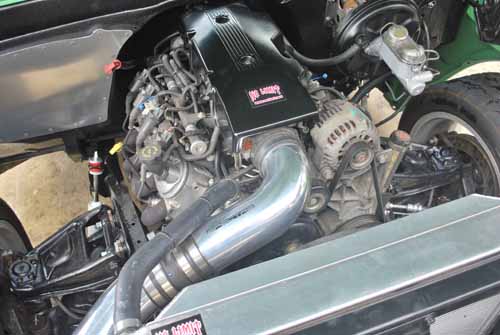
Introduced back in the later part of the last century, the LS series of power-plants are quickly becoming a top choice to power a classic project. They’ve proven themselves as an affordable model for daily use while still providing a fair amount of horse-power to push along an older truck down the road.
The LS series wasn’t always the easiest way to go, and was very confusing to most engine installers for the first 5-7 years of their existence. It wasn’t until a few after-market manufacturers saw the price of salvage yard donors stabilize when items such as engine mounts, exhaust, cooling, fuel, and electronic systems began to pop up to the marketplace. Even then most enthusiasts were skeptical of how the electronic looking engine worked or performed.
A few transitional years have passed since the early days of the LS swap, and leave it to the good ole after-market guys to iron out all the wrinkles making this the one of the top choices on the dream wheel of ideas that the average truck builder strives for.
The LS series is probably the most diverse series of engine families ever made. Many different choices in model style, engine size, including horse-power ratings, and even a choice of material that the engine block is made from can be found in this engine family. This really is one of GM’s greatest achievements due to the fact that many of the models share some key components which can be found in their racing applications, that have been passed down to production models as well. Also the fact that GM has embraced these engines as a key ingredient to power anything from a pick-up to a drift-car is a wonderful feat. GM has even worked with the Air Quality Management District (AQMD) and California’s CARB legislators, to produce an emissions compliant engine dubbed the E-Rod, which is available for purchase through your local GM parts distributor.
So as part of the Joe Touring series, we wanted to see just how much work goes into installing one of these LS series engines in the ’72 C-10’s engine bay. We picked one up at a local salvage yard that once powered a 2001 Chevy Tahoe. A bit of advice that we would like to pass on to you is if you decide to go the salvage yard route, be aware of the mileage of the engine package and how complete the package is. The more that you can get included in a package deal will save you down the road. Moreover, keep in mind that the computer or ECU (Electronic Control Unit) will need to be re-programmed by a professional outfit in order for it to run in your truck, which goes for an automatic transmission package as well. Keep in mind that an upgraded fuel and cooling system needs to be on the list of items to allow you to enjoy the full LS experience.
 |
 |
Here the gem that we took out of the truck in the first place. The Small Block Chevy is showing its age and is fast becoming a thing of the past. Here’s a look at the replacement engine right out of a 2001 Tahoe that we brought out of a wrecking yard, including the engine, transmission, accessories, and ECU.
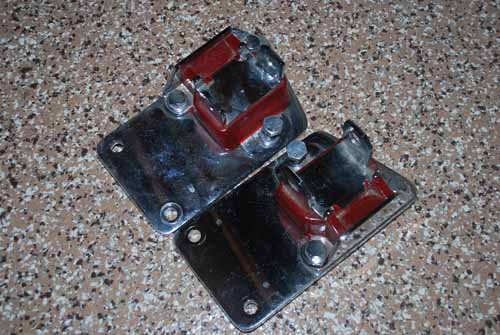
The LS engine mounts are still located on each side of the lower portion of the engine block; however they are not compatible with the traditional small block Chevy mounts. The cure to this dilemma is these engine mounts from Energy Suspension, which features polyurethane construction for long lasting strength, while having a great looking chrome finish.
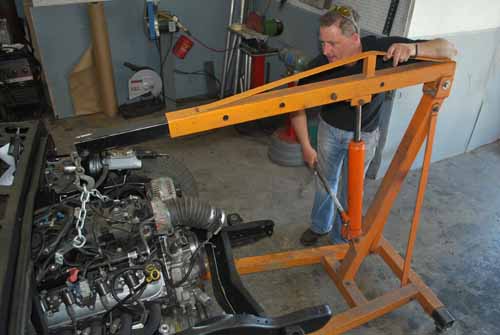 |
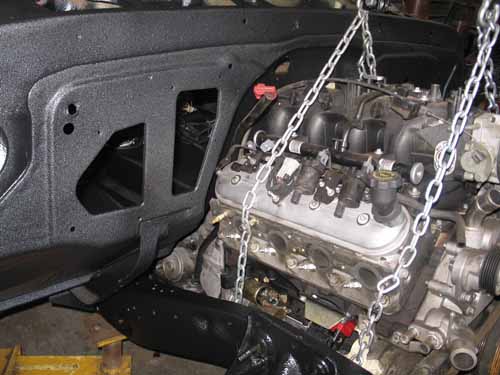 |
The engine and transmission are hoisted with a cherry picker and lowered into the engine bay.
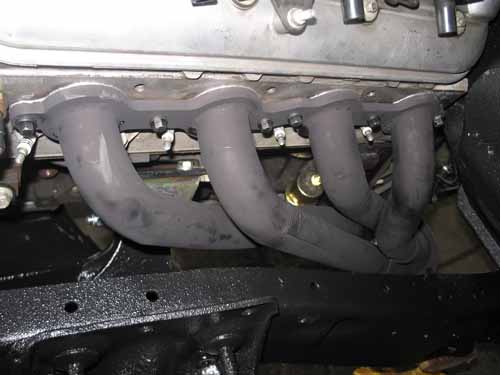
These headers are made by Hedman Headers and feature a ball style collector to prevent leaks that are usually a problem with most lowered applications. Available in raw finish or a heat reducing coating these are really built to last.
 |
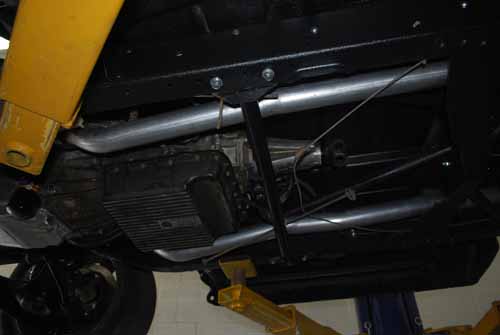 |
A look underneath gives us a better look at the Hedman Headers ball collectors and the way we routed the exhaust system. Note the transmission crossmember that is purpose built for the 4L60 overdrive transmission.
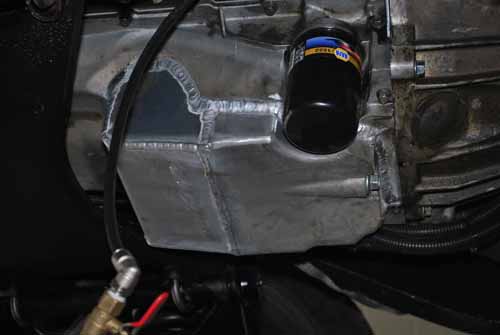
The stock oil pan hangs down way too low and could create some problems with ground clearance. One big problem is the fact that the pan can be shortened, but the oil capacity would suffer. The answer is to lower the pan and extend the front of the pan as is shown in this photo.
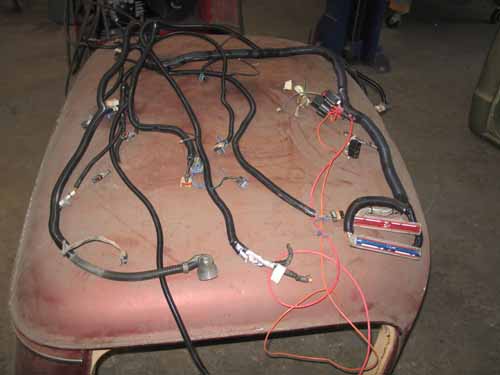 |
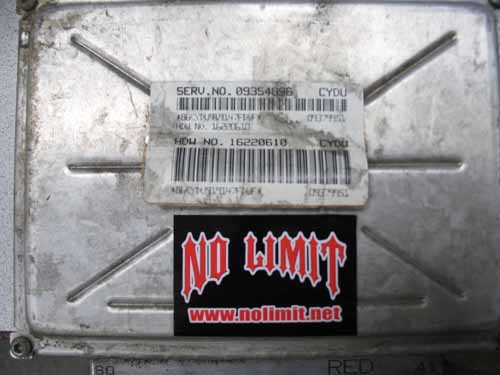 |
Here’s a look at the electrical harness that runs the engine. The factory computer or ECU will need to be reprogrammed removing some of the features that are only useful in the factory Tahoe. We sent our ECU to Painless Wiring’s main facility in Texas to custom tailor the computer to suit the needs of the truck. The process only takes a day to perform but takes it a few days to ship back and forth. So if you’re in a hurry, plan ahead.

We plan on using JT as a test truck for suspension testing at the local track, so after talking to the engineers at Painless Wiring, they recommended using their new transmission controller unit that makes it possible to lock the transmission into the lower gears, and keep the converter from locking into overdrive. This isn’t the only feature of the unit which will allow you to use different transmissions, or control functions that are not compatible with the factory ECU.
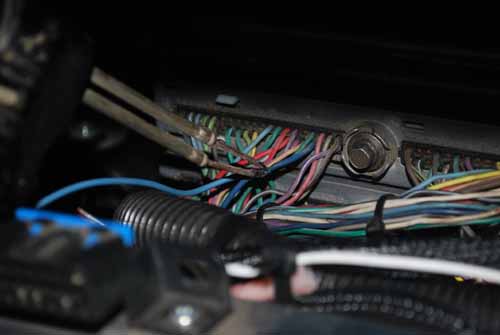 |
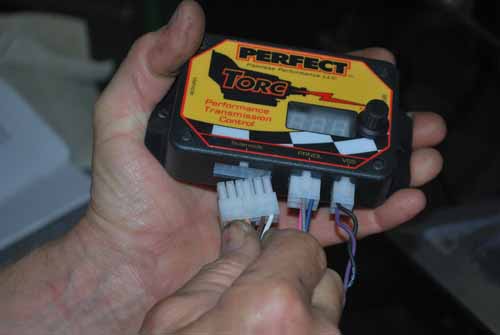 |
Installing the unit is pretty straight forward. Detailed instructions guide you through the steps to wiring it into the ECU’s main connector, the rest just plugs right into the Painless unit.
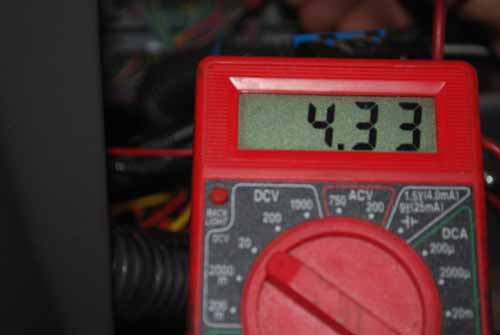
After we soldered the wire into the ECU, we plugged it in the unit and found a good location to mount the unit. We turned on the ignition and checked the voltage reading to the recommended specs.
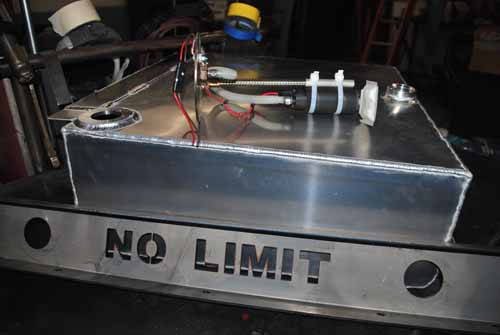 |
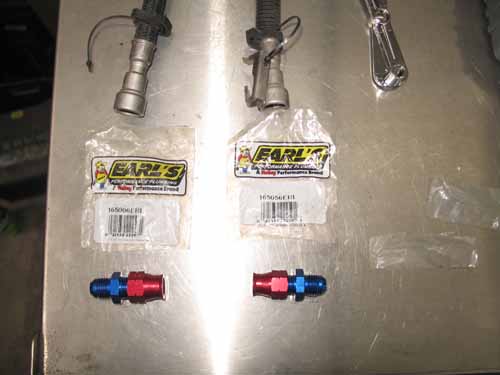 |
The factory fuel system will need an upgrade as the LS fuel injection requires more fuel pressure than a carbureted engine. No Limit manufactures this aluminum fuel tank sporting an electric in-tank fuel pump as well as a new cross member that allows you to mount everything up the right way. Some additional items such as an in-line fuel filter, and these fuel fittings from Earls supply round out the rest of the fuel system.

When we ordered a radiator we asked to have a bung installed like this one that allows a bi-pass from the top of the engine to relieve steam build up in the top halves of the LS engines.
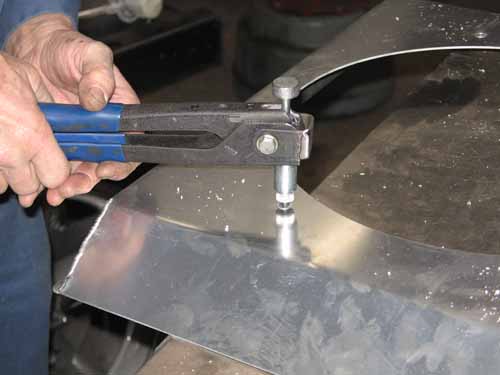 |
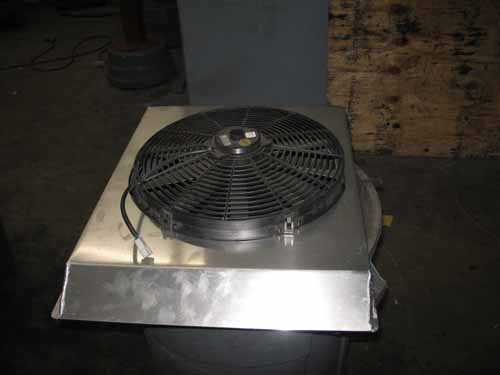 |
An aluminum fan shroud gets a few nut-cert style fasteners which will make it easier to run the hardware through the fan mounting them together as one.
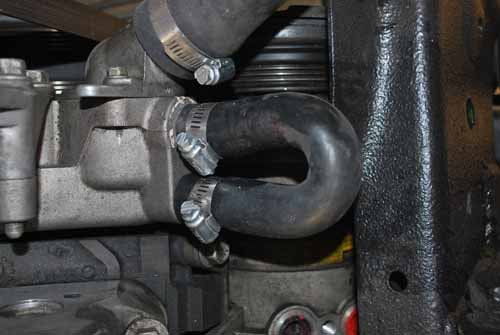 |
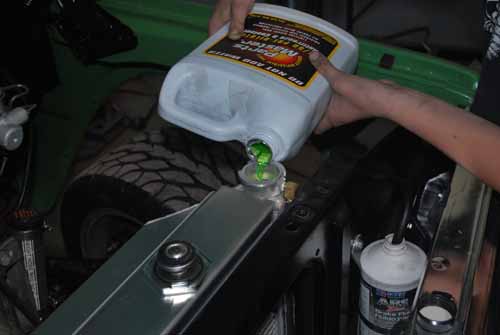 |
For the California crowd, a heater isn’t really needed, so this bi-pass hose was used to control the flow put out from the water pump. Now it was time to fill the cooling system with coolant and check it off of the list.
 |
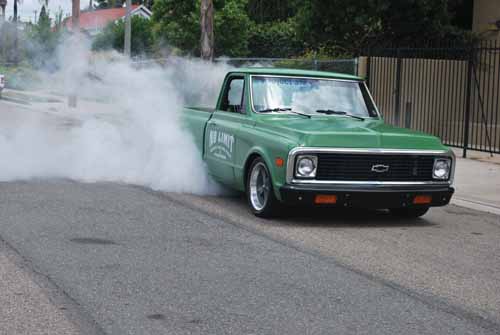 |
Spectre performance makes it easy to make your own cold air intake system with their array of elbow bends and connectors to make a fully functioning air intake system. With everything checked off the list of things to do, it was time to drag the truck out for some tire “roasting”, I mean testing.
Sources:
Specture Performance: www.spectureperformance.com
Earls supply:
No Limit Engineering: www.nolimit.net
Painless wiring: www.painlesswiring.com
Hedman Headers: www.hedman.com
Energy suspension: www.engerysuspension.com
Sources:
No Limit Engineering: www.nolimit.net
SEM “rock-it liner” www.semproducts.com
Coast Airbrush: www.coastairbrush.com
Chevy Truck Salvage: (714) 554-1850
